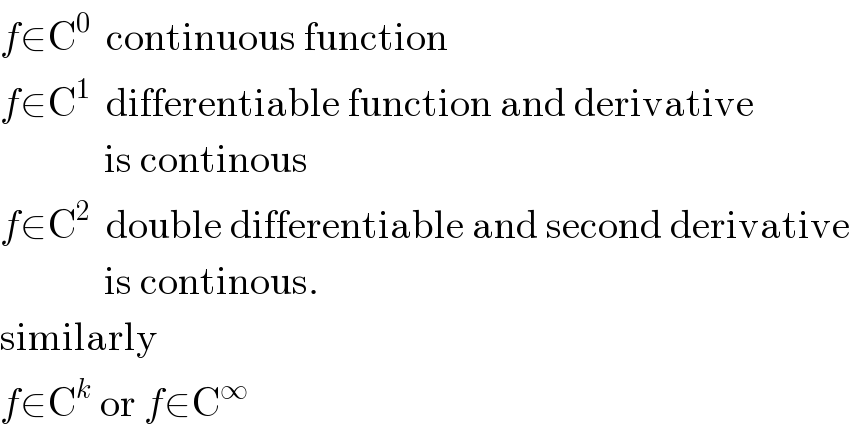Question Number 2289 by 123456 last updated on 14/Nov/15
![suppose that f:[0,1]→R, lets f∈C^2 and suppose that ∃α∈[0,1] such that f(α)+f(1−α)=1 proof or give a counter example that ∃ξ∈[0,1],f(ξ)=ξ](https://www.tinkutara.com/question/Q2289.png)
$$\mathrm{suppose}\:\mathrm{that}\:{f}:\left[\mathrm{0},\mathrm{1}\right]\rightarrow\mathbb{R},\:\mathrm{lets}\:{f}\in\mathrm{C}^{\mathrm{2}} \\ $$$$\mathrm{and}\:\mathrm{suppose}\:\mathrm{that}\:\exists\alpha\in\left[\mathrm{0},\mathrm{1}\right]\:\mathrm{such}\:\mathrm{that} \\ $$$${f}\left(\alpha\right)+{f}\left(\mathrm{1}−\alpha\right)=\mathrm{1} \\ $$$$\mathrm{proof}\:\mathrm{or}\:\mathrm{give}\:\mathrm{a}\:\mathrm{counter}\:\mathrm{example}\:\mathrm{that} \\ $$$$\exists\xi\in\left[\mathrm{0},\mathrm{1}\right],{f}\left(\xi\right)=\xi \\ $$
Commented by Rasheed Soomro last updated on 15/Nov/15

$$\mathcal{THANK}^{\mathcal{S}} !\:\:{It}'{s}\:{increase}\:{in}\:{my}\:{knowledge}. \\ $$
Commented by RasheedAhmad last updated on 15/Nov/15
![If f:[0,1]→R means x∈[0,1] and f∈R then what is the meaning of f∈C^2 ?](https://www.tinkutara.com/question/Q2316.png)
$${If}\:\:{f}:\left[\mathrm{0},\mathrm{1}\right]\rightarrow\mathbb{R}\:{means}\:{x}\in\left[\mathrm{0},\mathrm{1}\right]\:{and}\:{f}\in\mathbb{R} \\ $$$${then}\:{what}\:{is}\:{the}\:{meaning}\:{of} \\ $$$$\:\:\:\:{f}\in\mathrm{C}^{\mathrm{2}} \:? \\ $$
Commented by prakash jain last updated on 15/Nov/15

$${f}\in\mathrm{C}^{\mathrm{0}} \:\:\mathrm{continuous}\:\mathrm{function} \\ $$$${f}\in\mathrm{C}^{\mathrm{1}} \:\:\mathrm{differentiable}\:\mathrm{function}\:\mathrm{and}\:\mathrm{derivative} \\ $$$$\:\:\:\:\:\:\:\:\:\:\:\:\:\mathrm{is}\:\mathrm{continous} \\ $$$${f}\in\mathrm{C}^{\mathrm{2}} \:\:\mathrm{double}\:\mathrm{differentiable}\:\mathrm{and}\:\mathrm{second}\:\mathrm{derivative} \\ $$$$\:\:\:\:\:\:\:\:\:\:\:\:\:\mathrm{is}\:\mathrm{continous}. \\ $$$$\mathrm{similarly} \\ $$$${f}\in\mathrm{C}^{{k}} \:\mathrm{or}\:{f}\in\mathrm{C}^{\infty} \\ $$
